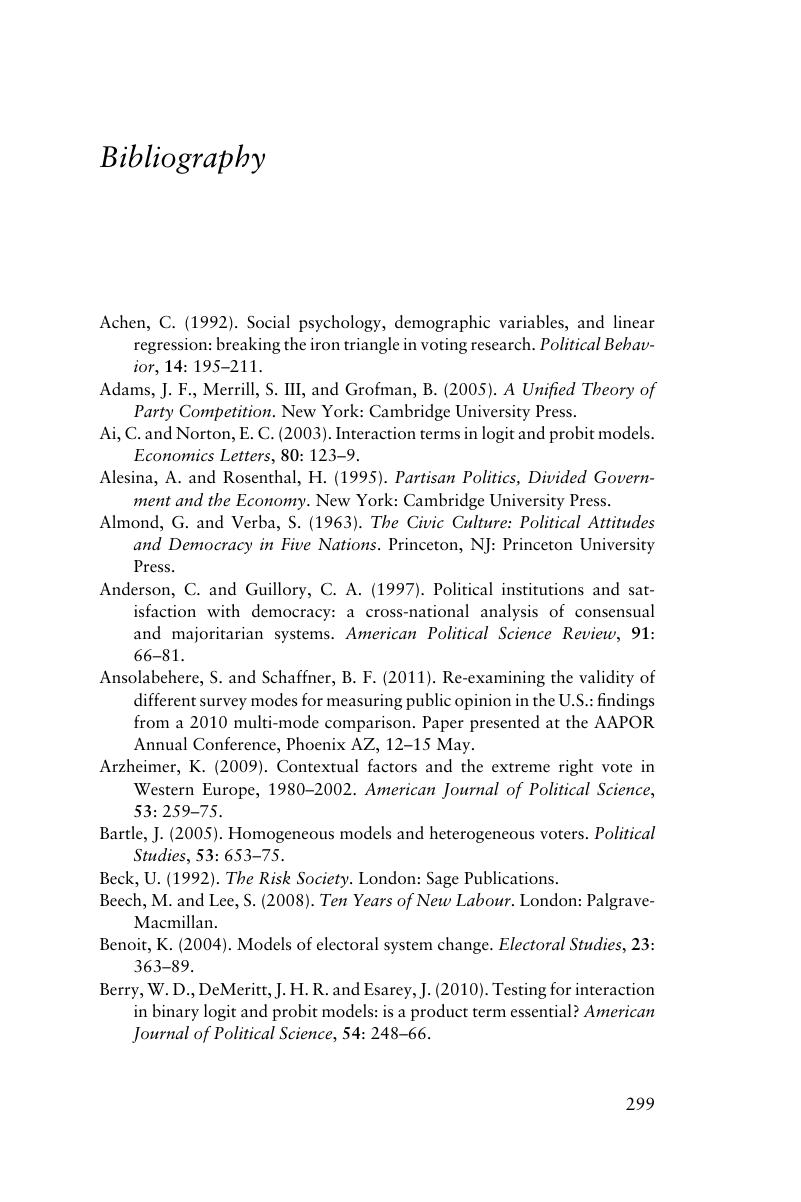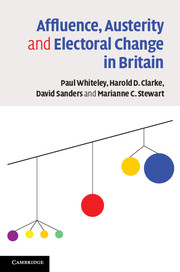Book contents
- Frontmatter
- Contents
- List of Figures
- List of Tables
- Acknowledgments
- 1 The politics of affluence and austerity
- 2 Tony's politics
- 3 Gordon's politics
- 4 ‘I agree with Nick’
- 5 Making political choices
- 6 Bearish Britain
- 7 Choosing how to choose
- 8 Performance politics and subjective well-being
- 9 Valence politics, austerity policies and electoral prospects
- Appendix A Design of the 2010 British election study
- Appendix B Measurement
- Notes
- Bibliography
- Index
- References
Bibliography
Published online by Cambridge University Press: 05 June 2014
- Frontmatter
- Contents
- List of Figures
- List of Tables
- Acknowledgments
- 1 The politics of affluence and austerity
- 2 Tony's politics
- 3 Gordon's politics
- 4 ‘I agree with Nick’
- 5 Making political choices
- 6 Bearish Britain
- 7 Choosing how to choose
- 8 Performance politics and subjective well-being
- 9 Valence politics, austerity policies and electoral prospects
- Appendix A Design of the 2010 British election study
- Appendix B Measurement
- Notes
- Bibliography
- Index
- References
Summary

- Type
- Chapter
- Information
- Affluence, Austerity and Electoral Change in Britain , pp. 299 - 313Publisher: Cambridge University PressPrint publication year: 2013



